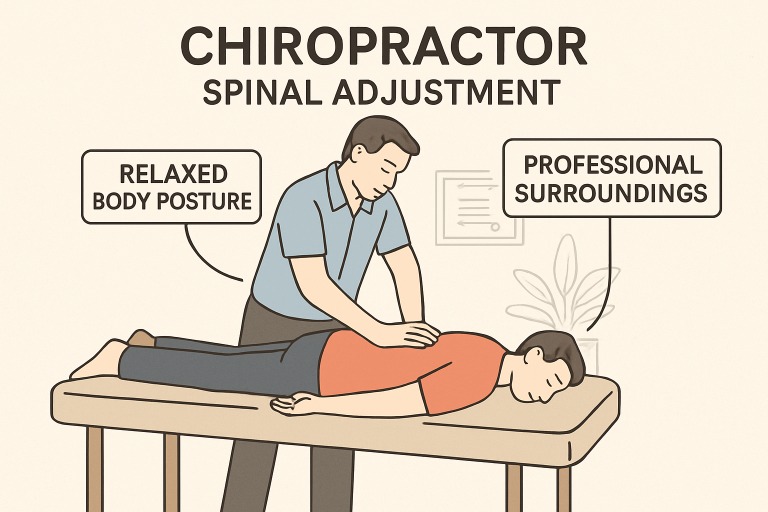Table of Contents
- Introduction
- What Are Spinal Adjustments?
- The Science Behind Pain Relief
- Common Conditions That Benefit from Spinal Care
- What to Expect During a Spinal Adjustment
- Evaluating the Risks and Side Effects
- Long-Term Benefits for Daily Life
- Integrating Spinal Adjustments into a Holistic Pain Management Plan
- Debunking Myths and Misconceptions
- Conclusion: Making Informed Choices for Pain Relief
Introduction
Chronic pain is a persistent issue for millions of individuals worldwide, affecting daily life and limiting mobility. While medications and surgeries are common routes for pain management, many are turning to holistic methods such as spinal adjustments for sustainable relief. One factor that often contributes to spinal misalignment and discomfort is head tilt, a condition that places uneven pressure on the spine and surrounding muscles. Spinal adjustments target these underlying biomechanical issues and offer a non-invasive approach to managing and potentially reducing chronic pain.
Before deciding if spinal adjustments can play a role in your own pain management journey, it’s helpful to understand what these adjustments are, how they work in the body, and what you can realistically expect from them. By shedding light on evidence-based benefits and potential risks, you’ll be empowered to make informed choices for your health and well-being.
What Are Spinal Adjustments?
Spinal adjustments, sometimes referred to as spinal manipulation, are manual techniques performed by trained professionals such as chiropractors. They involve applying controlled force to specific joints in the spine to restore proper alignment, reduce nerve irritation, and improve physical function.
Manual therapy, including spinal adjustments, dates back thousands of years and has been used across many cultures. Today, such therapies play a significant role in integrative healthcare, especially in managing musculoskeletal pain. As understanding of biomechanics and nervous system functioning has advanced, so too has the precision and safety of these techniques.
The Science Behind Pain Relief
Research indicates that spinal adjustments can affect the body’s pain pathways in several meaningful ways. Manipulating spinal joints impacts the nervous system, potentially reducing pain by modulating how pain signals are transmitted to the brain. Proper spinal alignment can relieve stress on the central nervous system, support the body’s natural healing processes, and restore range of motion.
Several studies, including those published in peer-reviewed journals, have shown improved lower back pain and function following chiropractic care. By supporting better nervous system function, spinal adjustments not only ease localized discomfort but also promote a broader sense of well-being.
Common Conditions That Benefit from Spinal Care
Spinal adjustments can help with a wide range of chronic pain conditions, most notably:
- Chronic back and neck pain
- Headaches and migraines
- Musculoskeletal issues related to sedentary lifestyles or repetitive stress
The Centers for Disease Control and Prevention notes that chronic pain is one of the most prevalent health issues in the United States, affecting about 20% of adults and driving the demand for various management strategies.
What to Expect During a Spinal Adjustment
If you’re considering spinal care, you might wonder what happens during a typical session. Most appointments begin with a physical examination and a discussion of symptoms. The practitioner will assess spinal posture, often looking for signs of misalignment or postural habits like head tilt that can impact spinal health.
The chiropractor will apply swift, controlled force to the affected joints using hands-on techniques or specialized instruments. Techniques are chosen with both safety and patient comfort in mind. While some people report immediate relief or increased mobility after a session, others experience gradual improvements over multiple visits. Mild soreness or achiness is common in the hours following an adjustment, but these effects are usually short-lived.
Evaluating the Risks and Side Effects
Like any healthcare intervention, spinal adjustments have potential risks and side effects. Most are mild such as temporary soreness, fatigue, or headaches—and can be minimized by drinking water, resting, and following your chiropractor’s advice. Serious complications, such as nerve damage or stroke, are extremely rare, especially when adjustments are performed by licensed and experienced practitioners. The American Chiropractic Association provides guidelines to ensure patient safety during chiropractic care.
Long-Term Benefits for Daily Life
The long-term advantages of regular spinal care can include improved mobility, greater flexibility, and a reduced reliance on pain medications. Many patients report that they notice better posture, increased energy, and enhanced mood in addition to pain relief. For some, integrating spinal adjustments into their wellness routine has been life-changing enabling them to return to favorite activities or work without constant discomfort.
Real-life testimonials and case studies back up these benefits, reassuring those considering spinal adjustments as part of their ongoing pain management strategy.
Integrating Spinal Adjustments into a Holistic Pain Management Plan
While spinal adjustments are effective for many, most pain management plans are most successful when they include lifestyle changes such as regular exercise, better ergonomics, and stress reduction. Physical therapy and mindfulness practices can complement spinal care, helping to support long-term outcomes.
If chronic pain is affecting your quality of life, or if conventional treatments have not provided adequate relief, it may be time to seek professional evaluation. When discussing manual therapies with your healthcare provider, ask about qualifications, treatment options, and realistic expectations for outcomes.
Debunking Myths and Misconceptions
Many misconceptions surround spinal adjustments, from fears of injury to doubts about their effectiveness. In truth, mounting scientific evidence supports the safety and value of chiropractic care when performed correctly. Concerns should be addressed by consulting reputable sources and asking direct questions of licensed healthcare professionals.
Conclusion: Making Informed Choices for Pain Relief
Spinal adjustments can play a key role in alleviating chronic pain, especially when integrated into a comprehensive wellness plan. By understanding the benefits, risks, and science behind this therapy, you can make informed decisions and confidently take the next steps toward better health. Always discuss your options with a qualified healthcare provider to determine the best approach for your unique situation.

